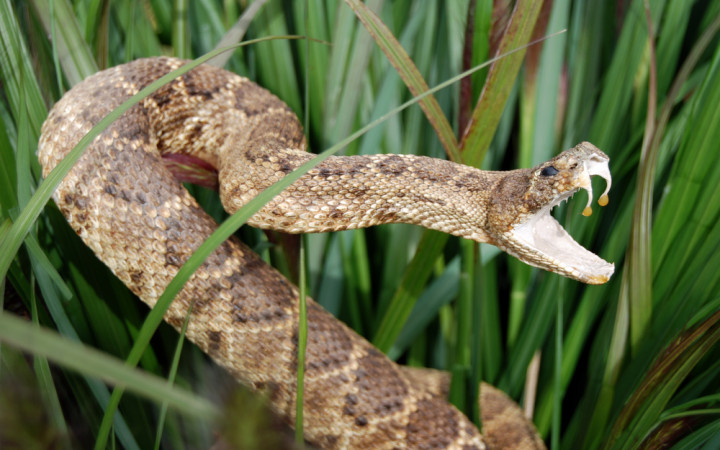Today’s Wonder of the Day was inspired by Danielle. Danielle Wonders, “what are fangs?” Thanks for WONDERing with us, Danielle!
“Grandma! What big teeth you have!" As Little Red Riding Hood discovered, those were some big teeth that “Grandma" had. Let's learn more about them.
Long, pointed teeth are called "fangs." In mammals, fangs are also called "canine teeth."
Although humans are mammals and have canine teeth, the canines of most humans are relatively short and aren't considered to be fangs.
Many different types of creatures have fangs, including cats, tigers, dogs, spiders and, of course, snakes! Fangs are also popular features of fantasy creatures, such as dragons and vampires.
Like vampires, mammals use fangs to bite and tear flesh, such as when they eat meat. Predators use fangs to hold and quickly kill their prey.
Venomous snakes use their fangs in a unique way: to inject venom into their prey. Venom immobilizes — and sometimes kills — snakes' prey.
Snake venom is a type of saliva produced by special glands. Venom contains a mixture of many different types of proteins and enzymes.
Many of these proteins and enzymes are harmless to humans, but some are toxic. Many venomous snakes have long, hollow fangs through which venom can be injected directly into prey.
When a snake uses its fangs to bite, muscles force venom from its storage glands through a duct into the hollow fang. Tiny holes at the ends of the fangs eject the venom directly into prey.
Some snakes have fangs at the back of their mouths. These fangs aren't hollow. Instead, small grooves on the inside of the fangs direct venom into the wound caused by a bite.
If you're wondering how some snakes with huge fangs keep from biting themselves, the answer is that their fangs fold! When they're not being used, the fangs fold flat against the inside of the mouth.
You will often hear people refer to snakes as being poisonous or nonpoisonous. Would you believe there are technically no poisonous snakes?
By definition, poison must be inhaled or ingested (eaten). The venom that deadly snakes use to kill prey is injected. This is why scientists refer to snakes as either venomous or nonvenomous.
Scientists sometimes catch venomous snakes and “milk" the venom from their fangs by squeezing the venom sac in their heads to force the release of the venom into a container. They then use this venom to create a special medicine — called "antivenin" — that can be used to save the lives of people bitten by snakes.




